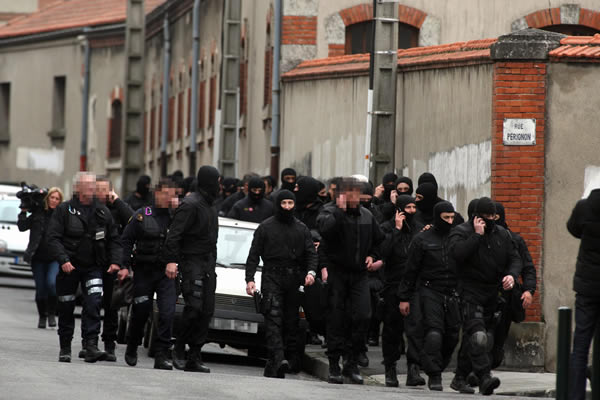
Islamic extremist Mohamed Merah who boasted of killing seven people to strike back at France died Thursday after jumping from his window, gun in hand, in a fierce shootout with police, a French minister said.
This October marks the 10-year anniversary of the Beltway sniper attacks, a series of killings that gripped the Washington, D.C., metro area with fear. Until being brought to justice, John Allen Muhammad and Lee Boyd Malvo methodically gunned down nearly a dozen innocent civilians. This past week, citizens in the area of Toulouse, France, had to endure a similarly terrifying experience.
Twenty-three-year-old Mohammad Merah, a self-proclaimed operative of al-Qaeda, is suspected of having murdered seven individuals in a series of deliberate shootings that took the lives of three French paratroopers, a rabbi, and three young children.
Merah’s violent rampage came to an end this week as he was discovered by authorities while hiding out in a flat in Toulouse. Following a long and often violent confrontation in which Merah seriously injured several police officers, the standoff came to a bloody end as he was shot dead by Special Operations personnel of the French police.
According to French Interior Minister Claude Gueant, Merah claimed to “to be a Mujahideen and to belong to Al Qaeda.” His apparent motivation for the murders was connected to his anger about French military policy in Afghanistan.
But Merah’s murderous inclinations were not relegated to France alone. Reports suggest that he had not only trained with al-Qaeda terrorists in Pakistan, but had also been caught on the battlefields of Afghanistan, purportedly planting bombs for the Taliban.
This, of course, begs the question of how Mohammad Merah was living freely in France after having been caught obliging the Taliban in their efforts to foment terror in the precariously fragile state of Afghanistan. These, and other questions, will need to be answered.
It is likely that attacks such as these will continue to occur. As Heritage’s James Carafano noted, “Alone or in small numbers, a few can slaughter many innocents—and it doesn’t take a weapon of mass destruction much more sophisticated than a mind of full of hate. Even the horrific 2008 attacks in Mumbai by bands of armed terrorists is something that could happen anywhere in the free world.”
Al-Qaeda, along with individuals associated with ancillary terrorist organizations, will continue to alter the playing field to suit its desire of sowing discord and chaos throughout the world. A terrorist attack need not be grandiose in scope or scale to achieve a deadly and psychologically disturbing outcome.
The weeklong killing spree in France reminds us that one deranged individual, compelled to pursue terror, can achieve a level of destruction that many working in unison often cannot. This can mainly be attributed to the difficulty counterterrorism and intelligence personnel have in identifying “lone wolf” or single-unit terrorists.
It also underscores the need for continued vigilance among all stakeholders within a society. This includes not only counterterrorism and intelligence personnel at the federal level, but also their state and local counterparts—and the general public must continue to be observant and mindful of the potential dangers associated with an evolving terror threat.






























